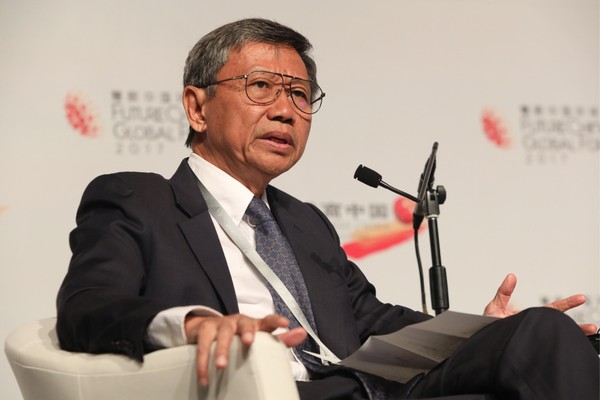Indonesia, with its booming economy and strategic location in Southeast Asia, is becoming a top destination for global investors. Notably, China investment Indonesia industrial parks is emerging as a powerful force shaping the country’s industrial landscape. Through Jababeka’s visionary initiatives, Chinese investors are capitalizing on shifts in global trade, especially after the recent US tariff adjustments.
Investors from China are stepping in; they're looking past tariffs, focusing instead on relocating production, optimizing logistics, and riding the wave of Indonesia’s expanding industrial ecosystem. This trend isn’t just about moving factories—it’s about crafting integrated industrial communities that power a new era of development.
Jababeka’s Strategic Appeal for Chinese Capital
Jababeka, one of Indonesia’s leading industrial park developers, has seen a marked surge in interest from Chinese firms since early 2025. This uptick is largely connected to the so-called “China+1” strategy, adopted by many companies aiming to reduce reliance on the United States amidst rising tariffs. By positioning China investment Indonesia industrial parks at the heart of its strategy, Jababeka offers not just land or infrastructure—but a gateway to Southeast Asia’s largest consumer base and a competitive manufacturing ecosystem.
Within its flagship complex in Cikarang, Jababeka is transitioning from being just an industrial zone to a modern metropolitan corridor. This forward-thinking vision is precisely what appeals to investors seeking long-term, integrated solutions.
Expansion Beyond Cikarang: Kendal, Batang, Tanjung Lesung, and Morotai
Another compelling aspect of this China investment Indonesia industrial parks story is geographical diversification:
- Kendal & Batang
- Jababeka is launching new industrial zones in Central Java’s Kendal and Batang regions. Supported by government-designated economic zones and strong infrastructure, these areas aim to attract high-labor and EV-sector investments.
- Tanjung Lesung
- Positioned to become a maritime tourism and light-industrial hub, Tanjung Lesung is backed by toll road developments and a fledgling airport. The potential for China investment Indonesia industrial parks to extend beyond manufacturing—toward tourism and service sectors—is evident.
- Morotai
- Located in the easternmost part of Indonesia, Morotai is being prepped as a logistics hub, initially anchored by tourism and fisheries, eventually bridging into broader logistics infrastructure. This project illustrates how China investment Indonesia industrial parks is supporting Indonesia’s national connectivity ambitions.
The “China+1” Effect: Why Chinese Investors Are Choosing Indonesia
With the imposition of steep US tariffs on goods from China (over 30%) and relatively lower duties on Southeast Asian exports, Indonesian industrial parks are gaining renewed appeal. Coupled with Indonesia’s vast domestic market—being the largest in Southeast Asia and the fourth most populous nation globally—the motivation to invest here is clear.
A land consultant, Gao Xiaoyu from PT Yard Zeal Indonesia, even noted that Chinese firms are highly active in exploring Indonesian market entry, stating: “We are quite busy lately. We meet from morning till evening.”
Business Implications: Jababeka’s Integrated Development Model
For investors seeking to expand, Jababeka represents more than traditional industrial parcels—it offers a full ecosystem. From modern infrastructure and metropolitan planning in Cikarang to targeted industrial corridors in Central Java, and transport and tourism-linked projects in Tanjung Lesung and Morotai, the developer is carving multiple entry points for various sectors.
When combined with policy incentives like economic zones, transport connectivity, and location advantages, the strategy underlines how China investment Indonesia industrial parks is not just opportunistic—but holistic and future-facing.
Moreover, shifting supply chains amid global trade volatility make these industrial parks not just real estate but strategic hubs.
Future Outlook: What Lies Ahead for China Investment in Indonesian Industrial Parks
With global trade reconfigurations ongoing, Indonesia stands at an inflection point. Future developments may include:
- More investments in EV supply chains in Kendal and Batang as the global auto industry evolves.
- Expansion of integrated tourism-industry zones like Tanjung Lesung, possibly attracting Chinese hospitality and logistics players.
- Further logistics and fisheries-focused infrastructure in the eastern regions via Morotai.
- New policies or incentives may emerge to align with investor needs, enhancing the appeal of China investment Indonesia industrial parks.
In short, this is not a fleeting trend—it reflects deeper economic transformation and strategic alignment. For Indonesia, the key will be maintaining infrastructure momentum and regulatory support to ensure that these investment waves translate into sustained growth.
Conclusion
The rise of China investment Indonesia industrial parks marks a transformative phase. Jababeka’s multi-regional development offers investors not just space, but an interconnected ecosystem. As global players continue to pivot from tariffs to strategic localization, Indonesia’s industrial landscape is set for dynamic expansion. The time is ripe—and Jababeka is ready to lead.
Read More






 Friday, 21-11-25
Friday, 21-11-25







